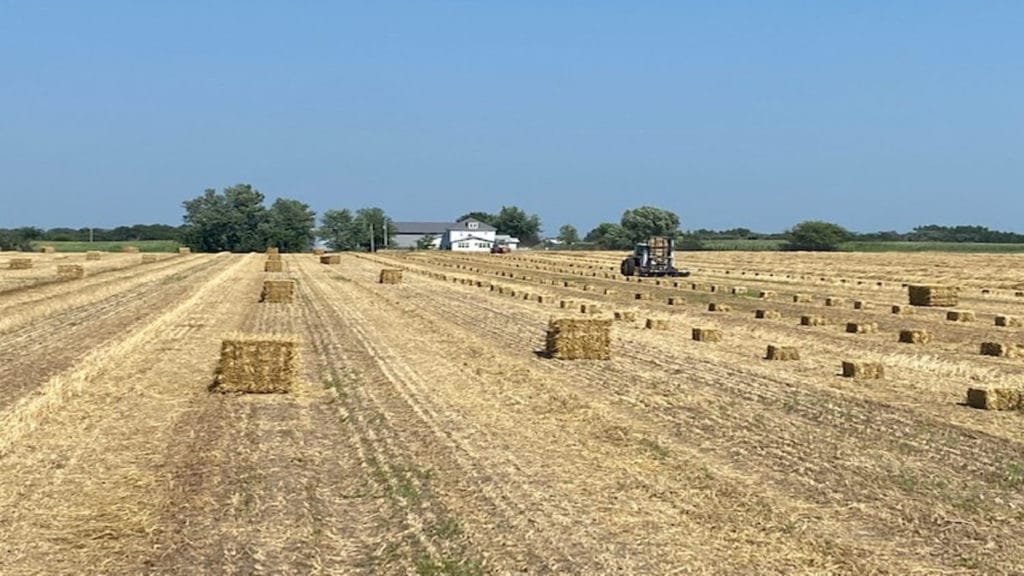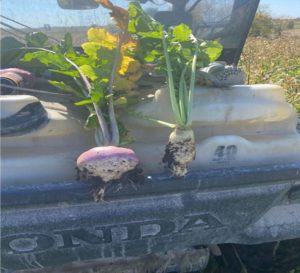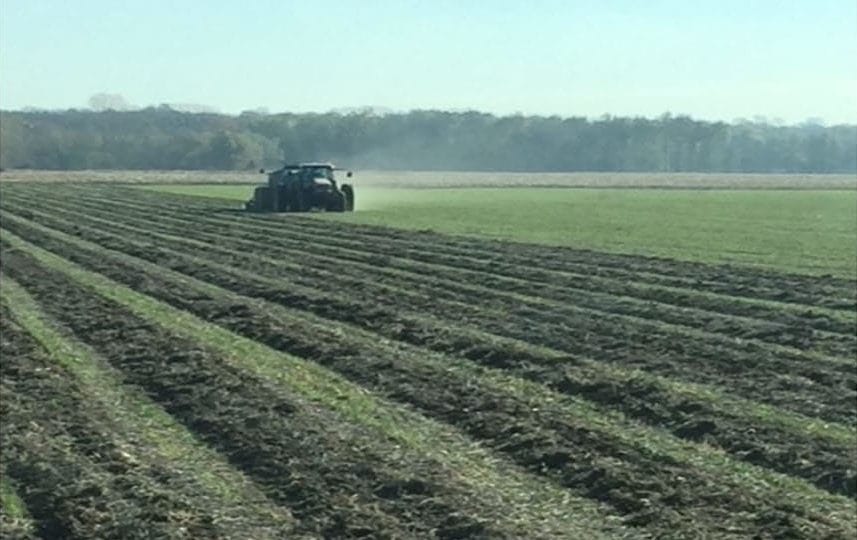Incorporating Livestock With Small Grains and Cover Crops: Lessons From a Century Farm
Kevin Prevo is a fifth-generation farmer in Bloomfield, Iowa, alongside his parents and three younger brothers. Prevo Farms is a sprawling 1400-acre farm, with 950 of those acres in crop rotation including corn, soybeans and rye or wheat. The remaining acreage is pastureland.
The farm officially became a century farm in 2016. That year, Kevin started incorporating cereal rye for seed and straw as an additional means to support his livestock. “We started with just 15 acres of rye,” Kevin says. “And by last year (2023), we were up to 220 acres of rye.”
Rye in Rotation
Kevin has been 100% no-till with cover crops for the past eight years. When first deciding to integrate rye into his crop rotation, he assessed those areas of his farm of poorer yield quality.
“We would plant rye instead of corn in those poor fields, and we basically replaced corn with rye in our rotation, so it went soybeans to rye,” Kevin says. “Then we noticed how much that rotation was improving the soil in those areas, so we continued to expand that rotation on the farm.”
Kevin and his family have learned a lot along the way about raising rye for seed. From starting with a 15-acre experiment to the current 220, the family’s rye production is proving to be lucrative.
“We’ve developed a market over time and around 75% of our seed goes south to Missouri,” says Kevin. “The farmers who buy from us spread the rye seed with their fertilizer for their own cover crops. We harvest the straw from our rye in July, and sell that mostly here in Iowa, around Iowa City.”
Kevin sells this straw after harvesting in bundles that his customers use for erosion control and bedding for livestock. He bales an average of 6 bales per acre that are sold in 14-bale bundles. They are sold for an average of $5 a bale or $70 for a bundle, grossing around $600 per acre.
Grazing a Cover Crop Mix Following Small Grains
The Prevos have about 150 cow-calf pairs on their acreage, most of which calf in March and April whereas the others calf in the fall. Kevin’s goal with his rye production and cattle is to not feed hay in the winter and instead use the cover crops for grazing as soon as harvest is over and the cover crops are seeded, all the way until that first March calving time.
To determine the seeding rate for his cover crop grazing mix, Kevin uses the smart mix calculator from Green Cover Seed. “I go through their smart mix calculator with the goals of winter feed, supplemental grazing and organic matter nutrient cycling in mind,” Kevin says. “It calculates a 15-way mix with Sudan grasses, Pearl millet, sunflowers, radishes and turnips, maybe some peas and, of course, clover.”
While this 15-way mixture is ideal for diversifying cover crops, Kevin admits that some aspects don’t always pan out as expected.
“Due to ongoing drought over the last summer, the Sudan grasses did not receive adequate moisture and struggled to grow, reaching only about waist height at the peak of the growing season,” Kevin says.
Other years, the radishes or the turnips may struggle, but keeping that variegated mix alleviates the risk of any one cover crop failing while also increasing feed diversity.
Hay that is not sold offsite makes a good backup when biomass of the cover crops is lower or parts of the 15-way mix may be underperforming, but the cows seem to prefer the cover crop mix, even in the depths of winter.
 The ability to graze his cover crop mix in the winter and spring gives Kevin flexibility in his rotational grazing. “We try to rotate through all our fields in the fall, and all our acres are close together,” Kevin says. “We walk our cows down the road a mile at most, so we don’t have to haul them, but they move easily. It just makes that rotational grazing of cover crops that much easier.”
The ability to graze his cover crop mix in the winter and spring gives Kevin flexibility in his rotational grazing. “We try to rotate through all our fields in the fall, and all our acres are close together,” Kevin says. “We walk our cows down the road a mile at most, so we don’t have to haul them, but they move easily. It just makes that rotational grazing of cover crops that much easier.”
Manure and Cover Crops at Planting
Kevin applies fertilizer ahead of corn, with 95% of fertilizer on the farm coming from hog manure. He does not broadcast his manure on top of his fields, instead preferring to knife in 3,000 gallons with a vertical till manure applicator in rows with 30-inch spacing. He then plants the corn directly on top of the manure in the 30-inch strip.
When rotating between corn and wheat, Kevin decided to follow his method of corn planting with his rye. “We took it one step further two years ago and are planting our wheat cover crop in two 10-inch rows,” Kevin says. “Then we are leaving a 20-inch gap and our manure gets applied in that gap which is also where we will plant the corn in the spring.”
Kevin calls this method of growing cover crops between the rows “strip no-till.” He applies the manure as late as possible, generally late November or early December. By then, the soil is cool, and the odor becomes less of a problem.
To simplify application, Kevin and his family-built storage facilities on each acreage. “We have to drive a bit further for our hog chores but moving that manure to each acreage and storing it on site for plantings makes the whole process of integrating cover crops so much easier,” Kevin says.
Further Reading
Can We Reduce N Rates and Improve ROI?
Selecting a Summer Cover Crop: 5 Goals and 5 Challenges
PFI Small Grains Resources
Sign up for PFI’s monthly Small Grains News email newsletter to receive program updates, small grains resources and information on upcoming events.
Register for our upcoming small grains shared learning calls via Zoom.
Learn about and apply for our small grains cost-share program.


